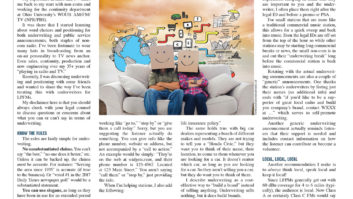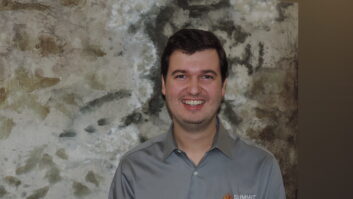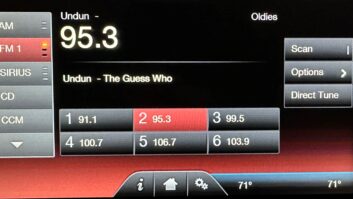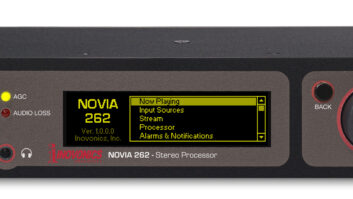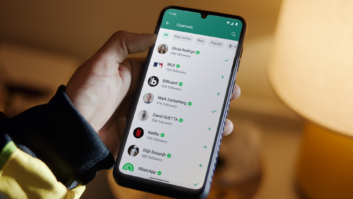My experience in radio and TV takes me back to my start with noncoms and working for the continuity department at Ohio University’s WOUB AM/FM/TV (NPR/PBS).

It was there that I started learning about word choices and positioning for both underwriting and public service announcements, both staples of noncommercial radio. I’ve been fortunate to wear many hats in broadcasting from an on-air personality to TV news anchor. Even sales, continuity, production and now engineering over my 35+ years of “playing in radio and TV.”
Recently, I was discussing underwriting and positioning with some friends and wanted to share the way I’ve been treating this with underwriters for LPFMs.
My disclaimer here is that you should always check with your legal counsel to discuss questions or concerns about what you can or can’t say in terms of underwriting.
KNOW THE RULES
The rules are fairly simple for underwriting.
No unsubstantiated claims. You can’t say “the best,” “no one does it better,” etc. Unless it can be backed up, the claims must be accurate. For instance: “Serving the area since 1935” is accurate (if true to the business). Or “voted #1 in the 2017 Daily Times newspaper poll” would be a substantiated statement.
You can use slogans, as long as they have been in use for an extended period of time (basically meaning, you don’t create a new slogan so you can make a claim). A slogan would be something like “Dodge trucks… Ram tough!” Are they really “ram tough”? Probably not, so “unsubstantiated,” but it is a long-term slogan identified with Dodge trucks, so it would be acceptable.
No prices or discounts. You can’t say “take 10 percent off” or “only $49.95.” Simply avoid money or prices completely.
No calls to action. This would be working like “go to,” “stop by” or “give them a call today.” Sorry, but you are suggesting the listener actually do something. You can give info like the phone number, website or address, but not accompanied by a “call to action.” An example would be simply: “They’re on the web at widgets.com, and their phone number is 123-4567. Located at 123 Main Street.” You aren’t saying “call them” or “stop by,” just providing the info.
When I’m helping stations, I also add the following:
● If a commercial radio station is airing the “announcement” (a commercial), there’s about a 99.999 percent chance you cannot run it as an underwriting announcement.
● If it feels, smells, looks, tastes or sounds like a commercial, it probably is a commercial!
WHAT IS UNDERWRITING, EXACTLY?
I describe underwriting as the following: Underwriting can’t sell a “widget.” Underwriting would be a poor choice for pushing bottles of soda for 99 cents. But underwriting is excellent at name recognition or, as commercial people would say, “building a brand.”
Underwriting is excellent for insurance companies and big car lots.
I say this because the insurance company doesn’t want to sell “a life insurance policy,” but they want to insure whatever you need insured. This means that they really want you to think of their company name when you need insurance, not the fact that they sell “a life insurance policy.”
The same holds true with big car dealers representing a bunch of different makes and models. They are not trying to tell you a “Honda Civic,” but they want you to think of their name, their location, to come to them whenever you are looking for a car. It doesn’t matter which car, so long as you are looking for a car. So they aren’t selling you a car, but they do want you to think of them.
I describe underwriting as a cost-effective way to “build a brand” instead of selling anything. Underwriting sells nothing, but it does build brands.
Using my old NPR/PBS lessons, I suggest starting underwriting announcements like this: “WXXX is supported by listeners like you, and by [underwriting portion here] Bob’s Bakery located at 123 West Main Street in Anytown. Bob’s Bakery features over 60 varieties of donuts, pastries, and wedding cakes. Serving Anytown since 1953, Bob’s Bakery. Their website is bobsbakerydotcom. 123-4567.”
No prices, no subjective info, no calls to action. Though it would be naturally easy to add the words “tasty” or “delicious,” those are descriptive words that take you just out of “underwriting” and into “commercial.” Positioning with “supported by listeners like you” puts the listener in the picture and reminds them that they are your first supporter. I’ve found that this has also led to some listeners actually making donations as they realize that they keep the station on the air.
POSITIONING AND LOGISTICS
I’ve also suggested that stations position underwriting logically based on my previous announcing and programming experience. Keeping in mind that they are important to you and the underwriter, I often place them right after the legal ID and before a promo or PSA.
For small stations that are more like a traditional commercial music station, this allows for a quick sweep and back into music. Even the legal IDs are off-set from the top of the hour so while other stations may be starting long commercial breaks or news, the small non-com is in and out their “underwriting break” long before the commercial station is back into music.
Rotating with the actual underwriting announcements are also a couple of “generic” announcements. One thanks the station’s underwriters by listing just their names (no additional info) and ends with “if you’d like to be a supporter of great local radio and build you company’s brand, contact WXXX at …” which serves to self-promote underwriting.
Another generic underwriting announcement actually reminds listeners that their support is needed and includes contact information on how the listener can contribute or become a volunteer.
LOCAL, LOCAL, LOCAL
Another recommendation I make is to always think local, speak local and keep it local!
Since LFPMs generally get out with 60 dBu coverage for 4 to 6 miles (typically), the audience is local. Now Class A or certainly Class C FMs would say that’s nothing or a disadvantage, but here’s where it is an advantage: A big station hitting 60 cities alienates any city (and listeners) who aren’t in close proximity to the one they might be discussing.
As a former jock in Cleveland and Denver, it was easy to talk about an event in a city that could be 50 miles away from half the listeners. It’s pretty easy to not talk “local” when you station has more “regional coverage” than local.
But little LPFMs are truly hyper local, so the focus can and should remain on their local cities in their coverage area (generally 1 to 5). If you talk about one city in your coverage, it’s probably 10 minutes away from your most distant listener. Some may say “this is making lemonade out of lemons,” and it probably is. But it truly allows the station to “focus” on an area all their listeners know and are a part of!
I suggest that all PSAs be local and have local connections. Make PSAs local! If there’s an organization with a good national PSA and local ties, I even suggest re-voicing the entire PSA with the local information included (as opposed to tagging a nation with local info).
Teaching about continuity and public service announcements, one of the things I often have to emphasize is keeping it to the point and brief.
You don’t need to tell listeners every detail of what is usually submitted. Press releases could easily be a one- to two-minute PSA, if written verbatim. I always suggest including just the most basic info and how a listener can learn more. Just enough to make sure the listener knows what the service or need is, and then let them get the info (from the website or a phone call). This means I always suggest 30 seconds or preferably less on PSAs.
Station promos are similar except a little more relaxed on time. When or where possible, the station’s website or social media are the focal point for details.
Comment on this or any story. Email [email protected].





